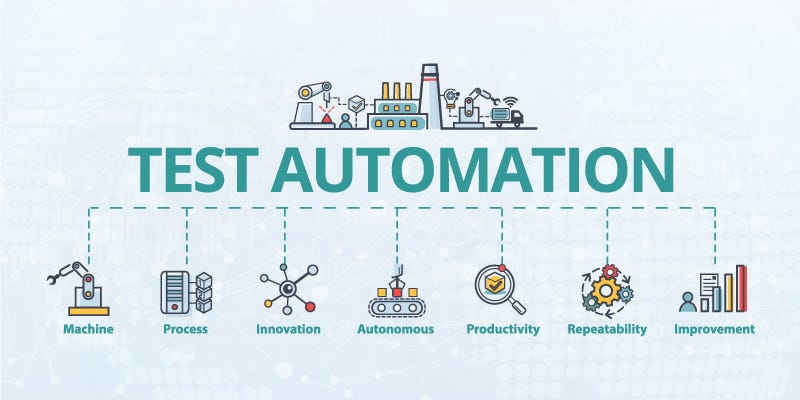Making Certain Success in Automation Checking: Key Metrics, Challenges, and Solutions Every QA Group Must Know
In the realm of software program high quality assurance, the landscape of automation testing is ever-evolving, demanding a meticulous technique to make sure smooth procedures. The journey to understanding automation screening is led with nuances that call for a keen eye for surveillance, evaluation, and continuous improvement. As the market drives onward, the mission for ideal performance in automation screening continues to be a constant search, prompting QA groups to equip themselves with the understanding and strategies important for triumph.
Significance of Secret Metrics
Comprehending the significance of key metrics is vital for reviewing the efficiency and performance of automation testing procedures. Key metrics function as quantifiable steps that give useful understandings right into various elements of the testing procedure, such as examination insurance coverage, test implementation time, issue density, and test case effectiveness. By analyzing these metrics, QA groups can determine traffic jams, inefficiencies, and areas for improvement within their automation screening framework.
One important facet of key metrics is their ability to track progress and monitor the general wellness of the screening procedure (automation testing). They allow stakeholders to make educated decisions based on data-driven understandings, which can lead to a lot more efficient testing approaches and much better resource appropriation. Additionally, vital metrics can help teams established sensible goals, measure the success of automation campaigns, and show the ROI of automation testing initiatives

Common Difficulties Faced
Challenges typically encountered in automation screening procedures can considerably affect the general efficiency and efficiency of QA teams. Among the major obstacles is the choice of the right examination situations for automation. Not all test instances are appropriate for automation, and choosing the incorrect ones can cause wasted time and resources. Additionally, maintaining examination scripts can be a difficult job, specifically as the application goes through constant modifications. Test script maintenance needs continuous updates and modifications to ensure they show the existing performance precisely. Another typical obstacle is the preliminary investment needed for establishing up automation structures and devices. This can be a barrier for some organizations, specifically smaller sized ones with minimal budgets. Additionally, automation screening may not cover all aspects of screening, such as functionality and individual experience testing, which still need manual intervention. Overcoming these difficulties needs proper preparation, tactical test case selection, durable upkeep processes, ample resources, and a clear understanding of the constraints of automation screening.
Efficient Solutions for Challenges
To address the barriers come across in automation testing, carrying out reliable remedies is important for enhancing the effectiveness and efficiency of QA teams. One essential remedy is to purchase durable training programs for QA groups to view website guarantee they have the essential skills to successfully make use of automation tools. Training can connect knowledge voids, enhance understanding of automation frameworks, and enhance scripting abilities, eventually causing extra effective examination production and implementation.
An additional essential service is to develop clear interaction networks within the QA team and with various other stakeholders, such as developers and project managers. Reliable communication helps in straightening assumptions, sharing progression updates, and quickly attending to concerns or roadblocks that may arise throughout the automation screening procedure.

Tracking and Analysis Methods
Executing efficient tracking and analysis strategies is vital for making certain the success and performance of automation screening procedures. In addition, assessing examination results and metrics supplies valuable understandings into the high quality of the software application being checked and the efficiency of the screening method.
One trick method in tracking and analysis is making use of control panels that combine appropriate metrics and KPIs in an aesthetically obtainable format. These control panels use a comprehensive summary of examination implementation standing, test protection, problem trends, and various other essential details. Frequently assessing and evaluating these dashboards can help QA groups make educated choices, prioritize jobs, and maximize screening initiatives.
Additionally, implementing automated notifies and notices based upon predefined thresholds can improve aggressive monitoring and prompt treatment. By establishing official website informs for efficiency discrepancies or test failings, groups can deal with problems quickly and avoid them from escalating. Overall, surveillance and evaluation strategies play an essential function in ensuring the performance and success of automation testing efforts.
Constant Improvement Strategies
Enhancing the efficacy of automation screening processes necessitates the regular improvement of strategies and methodologies. Continuous improvement methods are pivotal for QA groups to adjust to developing technologies and provide high-quality software application items. One crucial strategy to enhancing automation screening processes is to conduct regular evaluations and retrospectives. By evaluating past screening cycles, teams can recognize bottlenecks, ineffectiveness, and locations for improvement. Carrying out feedback loopholes and incorporating lessons learned right into future screening frameworks can produce significant renovations gradually.

Verdict
In final thought, it is critical for QA groups to recognize the essential metrics, obstacles, and services in automation testing to guarantee success. By carefully monitoring and examining information, applying reliable services to typical challenges, and constantly enhancing techniques, QA groups can maximize their testing procedures and deliver high-quality software application items. Complying with these techniques will eventually bring about more efficient and efficient automation screening practices.
By evaluating these metrics, QA teams can determine bottlenecks, inefficiencies, and locations for improvement within their automation testing framework.
Furthermore, key metrics can assist teams set sensible goals, determine the success of automation efforts, and demonstrate the ROI of automation screening efforts.
Obstacles typically come across in automation testing procedures can significantly influence the general efficiency and efficiency of QA groups. Automation screening may not cover all elements of testing, such as use and individual experience screening, which still need manual treatment.In conclusion, it is essential for QA teams to read this comprehend the vital metrics, challenges, and options in automation screening to guarantee success.